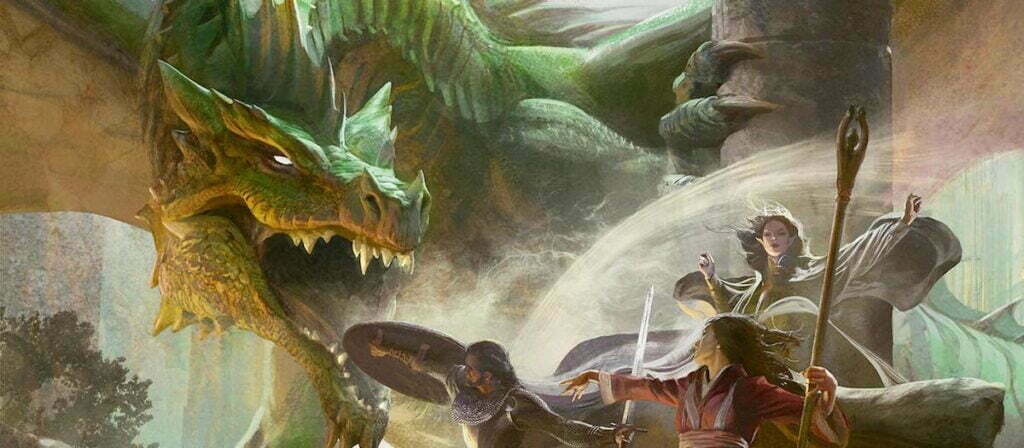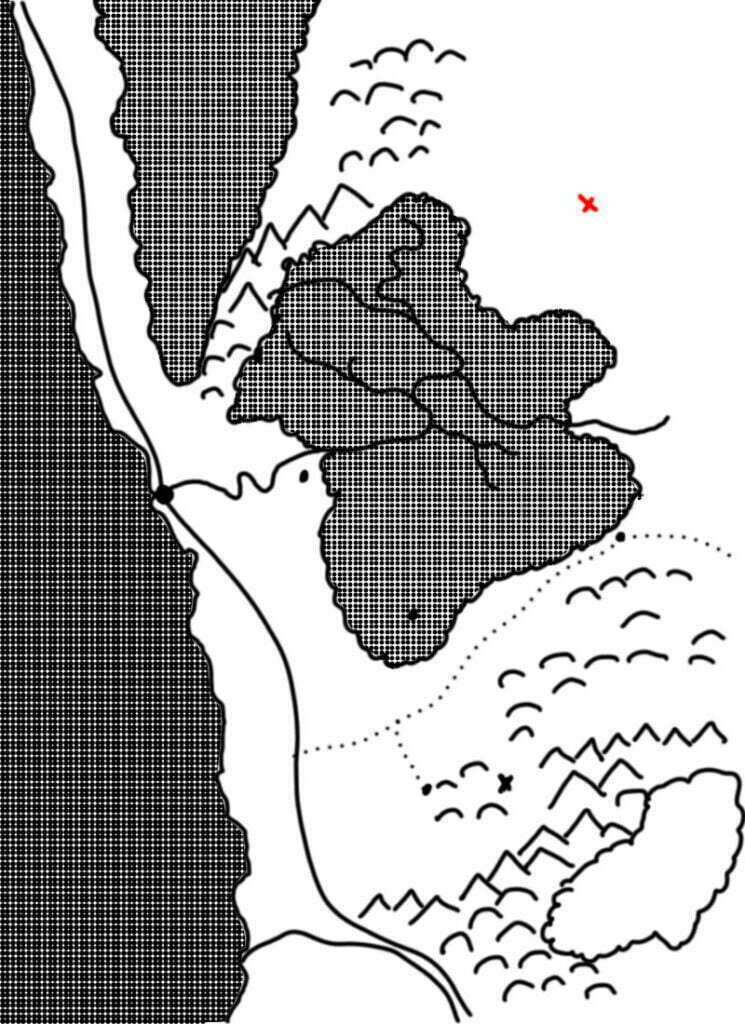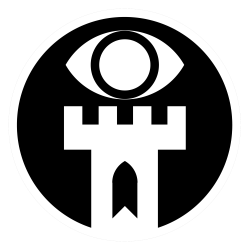Hands up how many have played the Starter or Essentials set, have reached level five and stalled out, wondering “what’s next?”

If you’ve had a good DM and party, your first levels and adventures have been a little (or a lot) scary, maybe a touch surreal, and at least a couple of times you’ve seriously worried your characters might die…for good.
You’ve learned that swords and axes look cool, but it’s also good to have a bludgeoning weapon for the occasional skeleton or ochre jelly that laughs at your stabby and slashy weapons.
You’ve learned the differences between the area of effect spells and precision ones. Fireball looks and sounds cool, but there’s a reason a lot of experienced magic users keep the humble magic missile in their inventory, especially when your party gets mixed in with the monsters.
So now your characters are level five, and they’re less likely to yell “We’re all going to die!” and more likely to cheer “We’ve got this!”
TL; DR:
- Adjust the map from the starter kit
- Establish the heroes in the area
- Hook onto another WotC adventure
- Homebrew your own adventure
- Grab some third party creator content
Treasure Map
Near the end of the Starter Set in Area 14 of Wave Echo Cave, there’s some treasure that offers a hook into further adventures. Yes, that’s right, a treasure map.
But it isn’t in the box. Your DM will have to make it up, and the adventure it leads to.
It might look something like this:

It really can be that easy. Trace the map they’re familiar with, put a big red X, and let the characters find their way there. If you want to give them a chance to figure out their shiny new Level Five abilities, you can toss a couple of Random Encounters at them before you hit them with a serious adventure.
If the party decided to take over the Redbrand building, or maybe Cragmaw Castle, make sure you keep track of whether or not they left any guards behind. Just because they cleared out the monsters once doesn’t mean that either building wouldn’t be an attractive lair for a new batch of baddies to move in and take over. This applies to any location they went to on their way to Wave Echo Cave.
The world is a dynamic place. The NPCs don’t go into stasis as soon as the characters leave the tavern or smithy.
The characters should be Level 5 by the time they finish Wave Echo Cave, which means a significant power leap for each of them. You can approach that a number of ways, but two of the most common are to simply let the players make their choices and hand wave the actual procedures, or turn each character’s leveling into a side quest of its own.
Clerics, druids, or paladins may be required to perform a service to their god or church. Rogues may receive a whisper from the shadows about a job they need to do. Warlocks may feel a tug from their patron to prove their worth. Every class has its hooks for progression.
Whatever happened to that dragon in Thundertree? Do your characters remember that one? Does word make it to them that the dragon and the cult who worshiped it have returned?
If they killed it, does a relative come seeking revenge? Does another dragon, or dragon-level, monster figure it can move into the power vacuum created when the dragon was driven off or killed?
Benevolent actions for the social adventurer
Back in the day, D&D used to provide for a more robust cycle of “earning treasure, spending it on the locals.” Once your characters hit a certain level it was pretty much expected they would establish some sort of a stronghold.
Fighters could build watchtowers or some other fortification. Clerics could build a shrine or small temple to their god(s). Druid and rangers usually ended up with a cool treehouse, and of course, the arcane magic users got to build their wizard’s towers.
The point was that they became connected to the locals. After your players finish the Starter Box, they have plenty of opportunities around Phandelver, from the mine they just liberated, over to Thundertree and out to Conyberry.
They already have a connection to the dwarves running the mine, and they may have developed other reasons to go back to Phandelver beyond that. Enterprising characters could set up shop in the town, or establish a wider network of connections for whichever faction they allied themselves with earlier.
Spending their hard-fought coin on things like rebuilding manors or castles. This can lead to benefits that can’t usually be bought with straight-up coins. Having a friendly relationship with an entire town can dramatically reduce the costs of living there. Providing protection for the area can result in the locals contributing to feeding your hirelings. Local healers may become generous with potions. They already potentially have the income from the mine, so some of them may be thinking about other business opportunities; legal or otherwise, depending on their backgrounds and aspirations.
Wizards of the Coast Adventures
When your players ask what comes next, there is already a handy answer for that from Wizards. They came up with the Essentials Set, which has a fair bit of overlap with the Starter box, but it also goes through to Level Six, and culminates with another dragon fight, if the characters make it all the way to the end.
Many people, myself included, think that running both the Starter and Essentials boxes together makes even more sense. Because the Essentials set doesn’t have a campaign-style narrative the quests can be spread around as you (and the characters) need. Several of the quests are also scaled, so you can run them at whatever level the characters happen to be when they get there.
It also provides several more opportunities for the characters to establish themselves in different locations after they’ve driven out the monsters and made the world a little safer, until the monster’s bigger badder kin come looking to find out what happened to them.
After all, both sets assume the characters drove off the dragons, rather than killing them. That opens up at least a pair of additional quests that could lead further if the dragon worshipping cult doesn’t like it when their idol is killed, or if either dragon continues displacing monster bands.
Developing your own adventures
The Dungeon Master’s Guide has a pretty handy walkthrough on how to design your own dungeons and adventures (pg. 72), including how to balance encounters (pg. 82). You can either roll off and get totally random (even nonsensically so) adventures, or you can pick and choose your path.
After enough adventure building, the random tables are a nice option for wracking your brain while you try to come up with something original for your players. A dozen rolls and now you have the beginnings of a new adventure.
You can easily use the maps in the Starter Set to base new adventures on. Perhaps someone discovers a trapdoor in Cragmaw Castle that leads down into the darkness, or one of the dwarves in Wave Echo Cave notices that “something just isn’t right” in one of the areas and asks the characters to investigate. Thundertree is a veritable smorgasbord of possibilities for hidden access points to dungeons.
Third-party adventures
There are hundreds, if not thousands, of third-party adventures out there. Some are quick and easy standalone, while others are extensive campaigns that span multiple levels. Some are free on various sites, and others will cost you anywhere from a few dollars to a few dozen.
The unfortunate side to third-party options is that the quality control is variable. Some of them are amazing and comparable in quality to anything you would expect out of Wizards, and some are much much better. Other producers… not so much.
Once you have a decent set of adventures you can mix and match them as you please. The upside to using third-party adventures is that it’s less likely your players have seen them, and if they’re used to your dungeon building, they could be in for some surprises if they think they’re “playing you,” so to speak.
By the way, not only do we create and provide third-party adventures, but we also partner with, support, and like several other creators. Here’s a list of those we tip a hat to:
- slowquest
- dmdave
- arcanelibrary
- monkeydm
- dmninetoes
- raptorheist
- gamingbrew
- koboldpress
- torchlightpress
Mixing it all up
The best part about having a bunch of options is that you don’t have to stick to a single path. You can grab a WotC adventure, flip the map, use some NPCs from a third-party supplier, and make some random rolls from the DMG tables. Suddenly you’ve got completely new, unique adventures in a fraction of the time it would have taken you to build them from scratch.
The more you do it, the more resources you’ll have that you can reuse and repurpose down the road.
Summary
Now, when your players are staring across the table at you after they finish the Starter Set and are wondering what comes next, you can smile at them, knowing you have some options for where to take them.
Telling them to roll dice while you make a few notes is optional for effect but encouraged.
